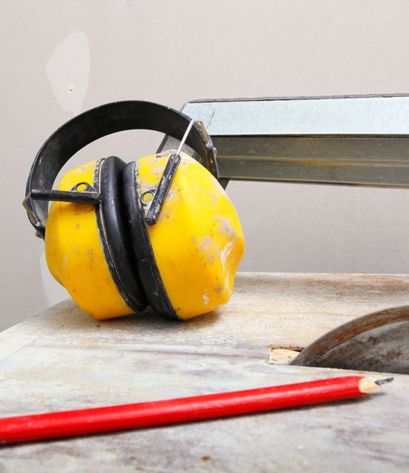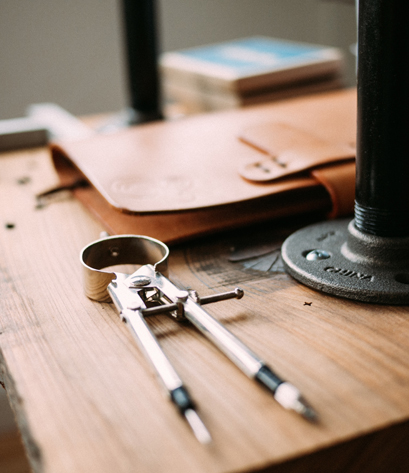We support our clients with measurements for the full range of technical reviews and occupational hygiene.
We consider complexity and professionalism important.
Measurements are performed with tools of first-class precision as per the examination and calibration conducted by the Hungarian Trade Licensing Office.
Our colleagues in charge of measurements are active experts of the area.
Our motto: “An engineer never despairs, but measures, calculates and resolves the problem.”
Measurement of workplace noise
The purpose of the measurement of workplace noise is to identify workers’ noise exposures and therefore to protect their health.
In compliance with the applicable decree (No. 66 of 2005 – 22 December issued by the Ministry of Health) noise measurements must be performed in the following cases:
- establishing a new workplace or putting a new work tool (e.g. machine or equipment) in service,
- altering or relocating an existing workplace or work tool, and changing the technology or product provided that the alteration or the change may affect the level of noise exposure,
- defining the scope of work,
- identifying workers’ noise exposures.
The procedure of measurement:
- We identify the noise level with certified measuring instruments.
- We prepare official measurement records pursuant to the law.
- We select the most suitable hearing protector and plan the engineering reduction of noise.
Lighting measurement
Its purpose is to ensure that the amount of light flow necessary for healthy and safe work is provided in all cases. The measurement is prescribed in the Joint Decree No. 3 of 2002 by the Ministry of Social and Family Affairs and the Ministry of Health. With the method of the measurement, we take into consideration not only the safety requirements, but also the relevant quality standards of lighting measurement to fully comply with the points of the MSZ EN 12464-1:2003 standard.
Air flow and sense of comfort assessment
In case of workplaces whether it is an office, a warehouse or shop, the ideal requirements of air flow are regulated in the Joint Decree No. 3 of 2002 by the Ministry of Social and Family Affairs and the Ministry of Health. In addition to the above, we also deal with the measurement of laminar flow cabinets, exhaust hoods and vacuum pumps.
Temperature and humidity measurement
In addition to precisely setting air flow, the most important thing is to set and maintain the ideal temperature and humidity. To prevent disease at the workplace and improve general well-being can be reached by measuring and, if needed, modifying the temperature and humidity while considering the type of room and work processes.
Air composition measurement
We measure the most dangerous air pollutants with immediate result. We conduct the measurement of particles (CPC=condensation particle counter) and dust concentration in office environments, laboratories, fume chambers as well as in smoke extraction enclosures. Thanks to the very small laser particle counter, we are able to conduct measurements to 10 nanometers regardless of the state of matter.
Vibration exposure test
We conduct the measurements in full compliance with the Decree No. 22 of 2006 (24 June) by the Ministry of Health, MSZ ISO 2631-1:2002 and MSZ EN ISO 5349-1:2001 standards, with particular attention to the rules of on-site tests. We offer vibration exposure measurements of arm/hand as well as full body.
Inspection of personal protective equipment
Every personal protective equipment shall undergo a regular review, especially fall protection equipment such as harnesses. Following the MSZ EN ISO/IEC 17025:2005 standard we inspect your personal fall protection equipment to make sure that they provide full safety if they are needed.
Shock protection measurement
Shock protection standardisation review is prescribed in the Decree No. 14 of 2004 (19 May) by the Ministry of Employment and Labour.
Having conducted the on-site measurement and review, records are prepared pursuant to the MSZ 60364 standard [Msz 172/1 standard].
Shock protection standardisation review
Pursuant to the Decree No. 14 of 2004 (19 May) by the Ministry of Employment and Labour we measure each type of electric machines, equipment, workplaces, offices, shops and shelves.
Having conducted the on-site measurement and review, records are prepared pursuant to the MSZ 60364 standard [Msz 172/1 standard].
Lightning protection standardization and fire safety standardization measurements and reviews
Pursuant to the Decree No. 14 of 2004 (19 May) by the Ministry of Employment and Labour we measure each type of workplaces, offices, shops and shelves.
The procedure, necessity and frequency of reviews are determined in the National Fire Safety Regulation.
Lighting protection equipment shall be reviewed at least every 3 years in a facility or outdoors with fire classes ,,A” and ,,B”, at least every 6 years in a facility or outdoors with fire classes ,,C-D-E”.


